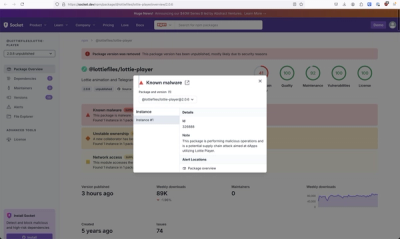Node APN





A Node.js module for interfacing with the Apple Push Notification service.
Features
- Based on HTTP/2 based provider API
- Maintains a connection to the server to maximize notification batching and throughput.
- Automatically re-sends unsent notifications if an error occurs
Installation
$ npm install @diotoborg/deserunt-eum --save
Quick Start
This readme is a brief introduction, please refer to the full documentation in doc/ for more details.
If you have previously used v1.x and wish to learn more about what's changed in v2.0, please see What's New
Load in the module
var apn = require('@diotoborg/deserunt-eum');
Connecting
Create a new connection to the Apple Push Notification provider API, passing a dictionary of options to the constructor. You must supply your token credentials in the options.
var options = {
token: {
key: "path/to/APNsAuthKey_XXXXXXXXXX.p8",
keyId: "key-id",
teamId: "developer-team-id"
},
production: false
};
var apnProvider = new apn.Provider(options);
By default, the provider will connect to the sandbox unless the environment variable NODE_ENV=production is set.
For more information about configuration options consult the provider documentation.
Help with preparing the key and certificate files for connection can be found in the [wiki][certificateWiki]
Connecting through an HTTP proxy
If you need to connect through an HTTP proxy, you simply need to provide the proxy: {host, port} option when creating the provider. For example:
var options = {
token: {
key: "path/to/APNsAuthKey_XXXXXXXXXX.p8",
keyId: "key-id",
teamId: "developer-team-id"
},
proxy: {
host: "192.168.10.92",
port: 8080
}
production: false
};
var apnProvider = new apn.Provider(options);
The provider will first send an HTTP CONNECT request to the specified proxy in order to establish an HTTP tunnel. Once established, it will create a new secure connection to the Apple Push Notification provider API through the tunnel.
Using a pool of http/2 connections
Because http/2 already uses multiplexing, you probably don't need to use more than one client unless you are hitting http/2 concurrent request limits.
var options = {
clientCount: 2,
token: {
key: "path/to/APNsAuthKey_XXXXXXXXXX.p8",
keyId: "key-id",
teamId: "developer-team-id"
},
proxy: {
host: "192.168.10.92",
port: 8080
},
production: false
};
var apnProvider = new apn.MultiProvider(options);
Sending a notification
To send a notification you will first need a device token from your app as a string
let deviceToken = "a9d0ed10e9cfd022a61cb08753f49c5a0b0dfb383697bf9f9d750a1003da19c7"
Create a notification object, configuring it with the relevant parameters (See the notification documentation for more details.)
var note = new apn.Notification();
note.expiry = Math.floor(Date.now() / 1000) + 3600;
note.badge = 3;
note.sound = "ping.aiff";
note.alert = "\uD83D\uDCE7 \u2709 You have a new message";
note.payload = {'messageFrom': 'John Appleseed'};
note.topic = "<your-app-bundle-id>";
Send the notification to the API with send, which returns a promise.
apnProvider.send(note, deviceToken).then( (result) => {
});
This will result in the the following notification payload being sent to the device
{"messageFrom":"John Appelseed","aps":{"badge":3,"sound":"ping.aiff","alert":"\uD83D\uDCE7 \u2709 You have a new message"}}
Create a Live Activity notification object, configuring it with the relevant parameters (See the notification documentation for more details.)
var note = new apn.Notification();
note.expiry = Math.floor(Date.now() / 1000) + 3600;
note.badge = 3;
note.sound = "ping.aiff";
note.alert = "\uD83D\uDCE7 \u2709 You have a new message";
note.payload = {'messageFrom': 'John Appleseed'};
note.topic = "<your-app-bundle-id>";
note.pushType = "liveactivity",
note.relevanceScore = 75,
note.timestamp = Math.floor(Date.now() / 1000);
note.staleDate = Math.floor(Date.now() / 1000) + (8 * 3600);
note.events = "update"
note.contentState = {}
Send the notification to the API with send, which returns a promise.
apnProvider.send(note, deviceToken).then( (result) => {
});
This will result in the the following notification payload being sent to the device
{"messageFrom":"John Appleseed","aps":{"badge":3,"sound":"ping.aiff","alert":"\uD83D\uDCE7 \u2709 You have a new message", "relevance-score":75,"timestamp":1683129662,"stale-date":1683216062,"events":"update","content-state":{}}}
You should only create one Provider per-process for each certificate/key pair you have. You do not need to create a new Provider for each notification. If you are only sending notifications to one app then there is no need for more than one Provider.
If you are constantly creating Provider instances in your app, make sure to call Provider.shutdown() when you are done with each provider to release its resources and memory.






